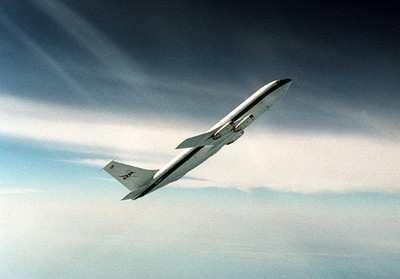Thu, Dec 17, 2009
Microgravity University Teams Will Flip, Float, And Fly For
Science
 NASA has announced their newest
batch of student teams participating in the Microgravity University
program. The fourteen university teams will each get a chance
to fly an experiment aboard a parabolic aircraft during 2010.
NASA has announced their newest
batch of student teams participating in the Microgravity University
program. The fourteen university teams will each get a chance
to fly an experiment aboard a parabolic aircraft during 2010.
The selection by NASA does not guarantee a flight for these
students; they must earn their wings. Although their
experiment proposals were selected for the program, the students
must still build, test, and certify their equipment to rigorous
NASA standards.
Typical requirements include substantiation of 9-G forward
crashloading and triple containment of any liquids. Size and
weight constraints ensure the experiments can be safely loaded and
flown on either the C-9B or 727 NASA uses for parabolic
flights.
The students also have training requirements that give them a
taste of what astronauts and other NASA pilots must endure.
Because they are flying in a public-use aircraft, the participants
must have a clean bill of health (no asthma or physical
disabilities), undergo a full day of training, and take a ride in
an altitude chamber.

Although the cost of their training and flight for University
teams is covered by NASA, they still have to find a way to pay for
their other expenses such as food, travel to Houston, lodging for
the week, and the experiment equipment itself. Usually a
university or state agency funds the trip, though most teams also
get help from corporate sponsors.
NASA flies the students through 32 parabolic arcs during each
flight, producing 20-30 seconds of reduced weight. The
aircraft can modify their free-fall trajectories to simulate Lunar
or Martian gravity in addition to providing microgravity. This is
the same method NASA has used to train astronauts for over 40
years.
The 2010 teams and experiments are:
- Embry-Riddle Aeronautical University (AZ) - Preliminary
Research for Inertia Matrix Estimation (PRIME) Satellite
- Yale University - Crystalline Structure Transformation in
Complex Plasma
- Embry-Riddle Aeronautical University (FL) - Project HORIZONS
(Harmonic Oscillations Resulting in Zero-G On-axis Nutation of
Spacecraft)
- Purdue University - Effect of Textured Surfaces on Bubble
Detachment and Contact Area in Microgravity
- University of Michigan - Evaluating the Extendable Solar Array
System in a Microgravity Environment
- University of Michigan - Exploring the Design Space of the Dry
Configuration of the Nanoparticle Field Extraction Thruster in
Microgravity
- The College of New Jersey - Analysis of Dust Particle Dynamics
in a Varying Gravitational Field Part III
- State University of New York at Buffalo Relative Attitude
Determination for Satellite Formation Flying
- Austin Community College (TX) SRED - Smart Resistive Exercise
Device For Free Weight Simulation In Microgravity
- San Jacinto College North (TX) Further Evaluation of the
Effects of Short Term Reduced Gravity on Prothrombin Time of
Plasma
- Utah State University FUNBOE Follow-Up Nucleate Boiling
On-flight Experiment
- University of Washington Rotational Damping of Slosh in
Microgravity
- University of Wisconsin @ Madison The Influence of Frequency on
the Performance of Ultrasonic Enhancement of Liquid Convection
Cooling in Variable Gravity
- West Virginia University Controlling Fuel Sloshing Through the
Use of a Ferromagnetic Solvent Manipulated via an Electromagnetic
Field
More News
Light Gun A handheld directional light signaling device which emits a brilliant narrow beam of white, green, or red light as selected by the tower controller. The color and type of>[...]
"The journey to this achievement started nearly a decade ago when a freshly commissioned Gentry, driven by a fascination with new technologies and a desire to contribute significan>[...]
Aero Linx: JAARS, Inc. For decades now, we’ve landed planes on narrow rivers and towering mountains. We’ve outfitted boats and vehicles to reach villages that rarely se>[...]
"Our driven and innovative team of military and civilian Airmen delivers combat power daily, ensuring our nation is ready today and tomorrow." Source: General Duke Richardson, AFMC>[...]
Aircraft Conflict Predicted conflict, within EDST of two aircraft, or between aircraft and airspace. A Red alert is used for conflicts when the predicted minimum separation is 5 na>[...]
 ANN's Daily Aero-Term (04.20.24): Light Gun
ANN's Daily Aero-Term (04.20.24): Light Gun Aero-News: Quote of the Day (04.20.24)
Aero-News: Quote of the Day (04.20.24) ANN's Daily Aero-Linx (04.21.24)
ANN's Daily Aero-Linx (04.21.24) Aero-News: Quote of the Day (04.21.24)
Aero-News: Quote of the Day (04.21.24) ANN's Daily Aero-Term (04.21.24): Aircraft Conflict
ANN's Daily Aero-Term (04.21.24): Aircraft Conflict




